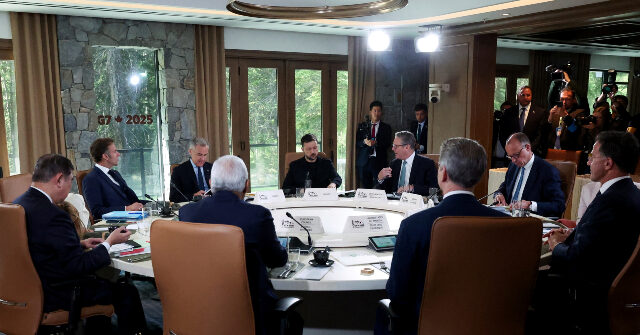The Group of Seven (G7) nations rolled out on Tuesday an action plan to “de-risk” critical mineral supply chains. This would involve developing lines of supply that do not run through China, currently the world’s top producer of most critical minerals.
The action plan did not mention China by name and it largely avoided using the term “de-risking,” which is generally understood to mean developing sources outside of China. Instead, the G7 spoke in general terms of “diversifying the responsible production and supply of critical minerals, encouraging investments in critical mineral projects and local value creation, and promoting innovation.”
“We recognize that non-market policies and practices in the critical minerals sector threaten our ability to acquire many critical minerals, including the rare earth elements needed for magnets, that are vital for industrial production,” the G7 statement said.
This was another not-so-thinly veiled dig at China, which is notorious for manipulating prices and flooding markets with oversupply to protect its monopolies. Using slavery and disdaining Western-style environmental regulations allows China to dramatically undercut the prices charged by competitors. Investors tend to be nervous about placing heavy bets on mineral projects that China can easily sabotage by temporarily slashing prices and flooding markets with oversupply.
Continuing to use China as a punching bag without dropping its name, the G7 said:
We recognize that critical minerals markets should reflect the real costs of responsible extraction, processing, and trade of critical minerals, while ensuring labour standards, local consultation, anti-bribery and corruption measures and addressing negative externalities, including pollution and land degradation.
The action plan included calls for more financing and investment capital to be made available for mineral projects, which would help to address the enormous start-up costs of such ventures. China began establishing its rare earths dominance all the way back in the early 1990s, when leader Deng Xiaoping compared China’s rare earth resources to the oil wealth of the Middle East. Catching up to China’s refining capacity will not be easy or cheap.
“Recalling our commitment to promote debt sustainability and transparency, we acknowledge the challenges faced by developing countries with mounting debt levels, including to finance infrastructure,” the G7 said, offering transparent, fair, and sustainable financing to those countries.
Some of the most promising deposits of rare earths and critical minerals are found in developing countries, which will need the kind of infrastructure financing the G7 described – and will hopefully think twice about getting it from China’s predatory Belt and Road Initiative (BRI).
China is well aware of the competition it could face from Third World countries and is already taking steps to undermine those competitors. An Australian company developing a rare earths project in Malawi this year caught Chinese nationals trespassing on its work site at least three times.
The host of this week’s G7 summit, Canadian Prime Minister Mark Carney, said the group wished to maintain “constructive and stable relations with China,” but was prepared to take steps against “market distortions and harmful overcapacity.”
Carney touted Canada’s potential to become a major supplier of critical minerals to the G7 alliance, ensuring a reliable supply of minerals for “defense and technology.” The G7 action plan also called for aggressively developing resources in Australia, India, and South Korea.
“Canada has a lot of deposits of minerals, but not all of them can be exploited at a profit. Only by working together will we protect ourselves from any one country having a monopoly and then holding the rest to ransom,” Queen’s University professor Anne Johnson told the Financial Post on Tuesday.
Johnson said Canada’s challenges include a slow permitting process, heavy environmental regulations, and the rights of indigenous people living on mineral-rich land.
Read the full article here


